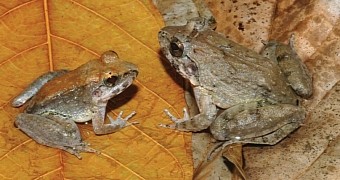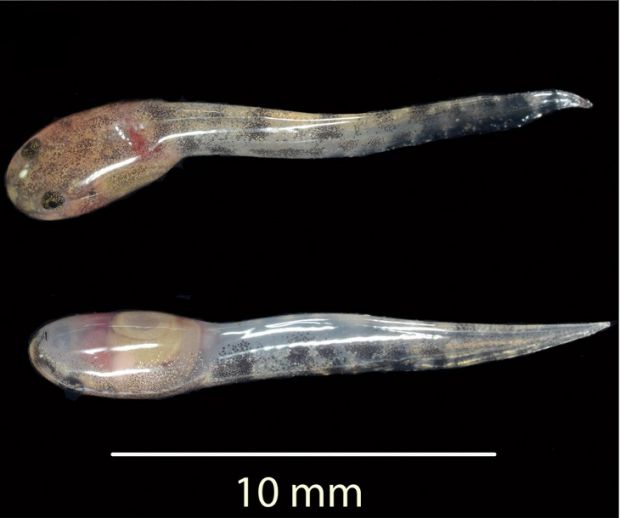There are well over 6,000 frog species in the world, and despite having been hard at work studying them for decades now, wildlife researchers are yet to know everything there is to know about such creatures.
In fact, it looks like the world's frog population still holds plenty of surprises. For instance, it was not too long ago that wildlife enthusiasts discovered a downright bizarre frog species that has fangs and that delivers live tadpoles.
The frog, featured in the photos accompanying this article, populates rainforests on Indonesia's Sulawesi Island. It was first discovered by a researcher named Djoko Iskandar and is thoroughly described in a recent paper in the journal PLOS ONE.
The frog's breeding behavior is unique
In their report announcing the discovery of this frog species, Indonesian researcher Djoko Iskandar, together with herpetologist Jim McGuire with the University of California – Berkeley and researcher Ben Evans of McMaster University in Ontario, Canada, names the species Limnonectes larvaepartus.
The specialists explain that, of the over 6,000 species of frogs that have until now been documented by science, nearly all breed via external fertilization. What this means is that the female lays the eggs on the ground or in some other carefully chosen location and then the male fertilizes them.
Only a dozen frog species turn to internal fertilization to birth a new generation, but then they either lay the fertilized eggs or deliver froglets, which researchers describe as teeny tiny frogs that have recently developed from tadpoles. Limnonectes larvaepartus is unique in that it delivers live tadpoles.
“Almost all frogs in the world – more than 6,000 species – have external fertilization, where the male grips the female in amplexus and releases sperm as the eggs are released by the female. But there are lots of weird modifications to this standard mode of mating.”
“This new frog is one of only 10 or 12 species that has evolved internal fertilization, and of those, it is the only one that gives birth to tadpoles as opposed to froglets or laying fertilized eggs,” researcher Jim McGuire with the University of California – Berkeley explains.
By the looks of it, the frogs deliver their offspring in the proximity of small pools or seeps. This is yet to be confirmed, but wildlife researchers suspect that the female and the male work together to look after the new generation.
Not the only weird thing about these frogs
Writing in the journal PLOS ONE, the scientists detail that frogs belonging to this newly discovered species weigh some 5 to 6 grams (0.17 to 0.21 ounces ). They might not be all that impressive size-wise, but as it turns out, they are rather fierce little fellows.
Thus, Limnonectes larvaepartus specimens are equipped with two fang-like projections which stick out of their lower jaw and which the frogs rely on to fight off rivals during the mating season or in territorial disputes. It is possible that the frogs also use this fangs to keep safe from predators.
The researchers explain that, to their knowledge, as many as 25 different species of fanged frogs currently inhabit Indonesia's Sulawesi Island. Efforts are now being made to better documented the exact whereabouts of these amphibians.

 14 DAY TRIAL //
14 DAY TRIAL // 

